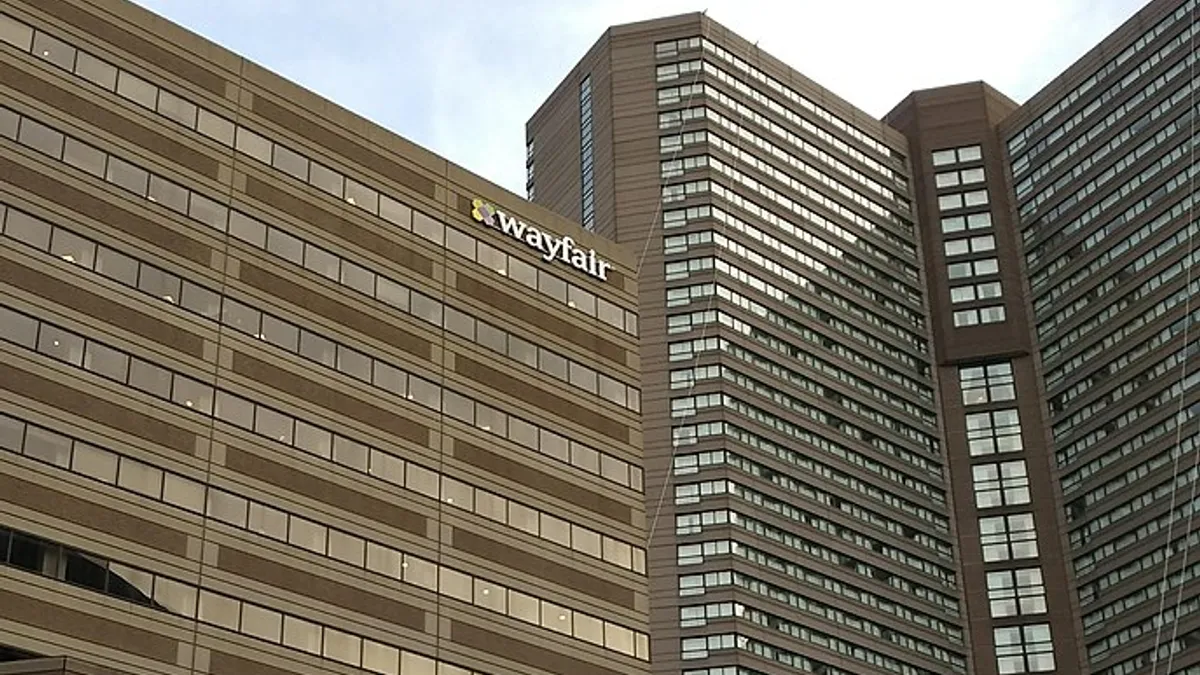Dive Brief:
- Wayfair experienced "record demand" in the second quarter dominated by the COVID-19 pandemic, with record numbers of both new and repeat customers, CEO Niraj Shah said in a press release.
- Total sales increased 83.7% to $4.3 billion and, according to Seeking Alpha, topped analyst expectations for the 11th quarter in a row. At 12.7 million, orders from repeat customers increased nearly 105% year over year.
- Net income came to $273.9 million in Q2, compared to a $181.9 million loss in the same period last year.
Dive Insight:
As continued COVID-19 concerns keep consumers at home, they're buying online — and buying for their homes.
Shah said that Wayfair's long-term investments, along with its proprietary logistics network and supplier partnerships, allowed "Wayfair to consistently serve our customers at a time they needed us most."
How long the demand surge that lifted the company in Q2 will last is an open question. William Blair analysts said in an emailed client note that they expect "a not insignificant percent of the volume boosting second-quarter performance to revert to retail channels after the pandemic." Yet they still see Q2 as a "net positive" that showcases "the underlying profitability of the platform at greater utilization rates following five years of accelerated spending ahead of growth."
Proving that Wayfair can indeed be profitable gained mounting importance as its losses persisted, and expanded. Last year, Wayfair's loss nearly reached $1 billion. In Q1 of 2020, the latter part of which was also influenced by pandemic shopping, the e-tailer's sales grew about 20%, but the growth of its losses were double that.
Wayfair's "fantastic" quarter still raises two "central" questions about its business, said Neil Saunders, GlobalData Retail managing director, in emailed comments. "The first is whether the current performance is sustainable," he said. "The second is whether, regardless of immediate sustainability, the figures point to the fact Wayfair's business model has a pathway to long-term profitability. On the former we are very skeptical. On the latter we are modestly skeptical."
GlobalData Retail's data shows that consumers have started shopping at physical stores again as they reopen, and online penetration levels in furniture and home furnishings have dropped from their peak in April, according to Saunders. And as he notes, Wayfair got a temporary boost from not only store closures at the outset of the COVID-19 crisis, but also increased home goods spending to outfit dwellings for working and learning from home.
"This was beneficial for Wayfair, but it is not a permanent situation," Saunders said. "Demand in some categories, such as office furniture, is already waning as consumer needs are sated. All indications are that home product demand will continue to soften over the remainder of this year."
While Wayfair posted a positive profit in Q2, its expenses remain high. Advertising costs reached $417.8 million, an increase of more than 61% from the same period last year.
Analysts with Jane Hali & Associates said that they "remain cautious" about Wayfair's expense structure while also noting that Wayfair is "well situated for the current retail landscape and serving current consumer need."
Still, as more retail moves online, other retailers are likely to face the same predicament, with costs and convenience to consumers rising in tandem.












